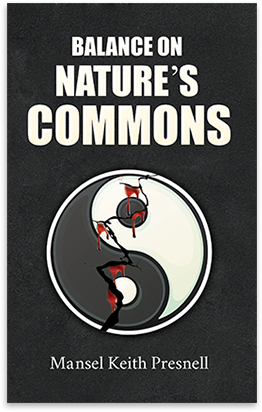
ADDRESSING ENVIRONMENTAL INSTABILITY - SOCIAL PRIORITIES. Part 1
Whether it be on the scale of the universe, a galaxy, our solar system, an ecosystem, a species, or an individual organism, the existence of each is a product of balance. Balance buys time needed for order to emerge from chaos. Order fathers’ synergies, either as natural evolution responding to environmental influences, or as sapient behaviour, sapience being the ability of an organism to apply knowledge.Ecological balances, established by Nature over time, contain a degree of flexibility that enables the environment to absorb change without acutely affecting that balance. Understanding how robust that capacity is requires an appreciation of the dynamics involved at a micro-ecological scale. Judging by the extent of environmental damage that has emerged over the last century, there is a sound case for assuming that many localities are already well past their natural carrying capacity. The human predicament is that while restoring the environmental balances that best suit our species might be technically achievable, humanity lacks a common will.
About the time of the industrial revolution humanity stepped off the the path of evolution. Lured by the promise of material wealth, it went on to consume natural resources unsustainably and, in the process, create a social schism. Equity, common to most tribal communities, was being diluted to a point where, according to Google, half of the world's net wealth (in dollar terms) now belongs to the top 1% of the population. The the top 10% of the population hold 85%, while the bottom 90% hold only 15% of the world's total wealth.
The debate about the impact that our species is having on environmental balance incorporates science, politics, guesswork and lies. Mankind’s many technological advances are at risk of being lost for want of balance. Should we as a species intend to preserve opportunities for future generations, we will need to exhibit a functional appreciation of natural mechanics, especially the link between sustainability and diversity. It is conceivable that we could slow or even reverse the decline of the Earth’s carrying capacity in a meaningful time frame, but already the damage bill is high and reserves of time are fast running out.
Our environmental vandalism, exacerbated by exponential population growth, is outstripping the Earth’s ability to maintain supply. A ‘supply and demand’ graph of natural resource stocks over time, suggests that within the next decade, life on earth will be irretrievably committed to another chaotic event that will have nothing to do with an asteroid smashing into the planet. While we may have the technical capability to escape its maw, we currently lack the spiritual maturity required to apply that knowledge effectively. Weakened by a massive reduction in species and cultural diversity, life as we knew it is about to be tested as never before.
The human race has come to a crossroad. The challenge now is to decide if, like the biblical Samson, we intend to pull down the pillars of the temple that is life and self-destruct, or if we are prepared to use our abilities to rebalance the natural environment, buying more time for the planet’s inhabitants to pursue their potential destiny.
The following parts of this blog describe a social philosophy, crafted to fit that requirement. count.
Post Views : 165